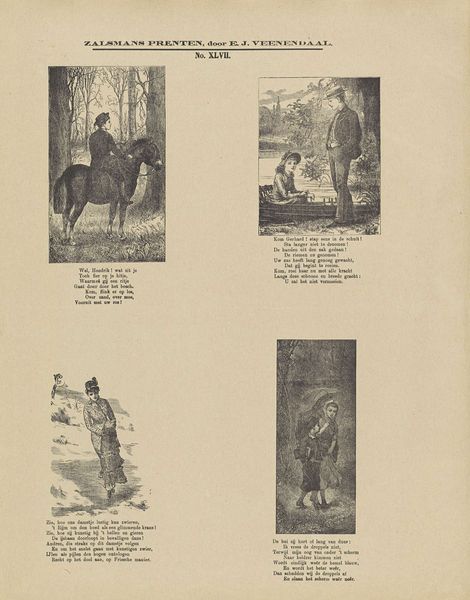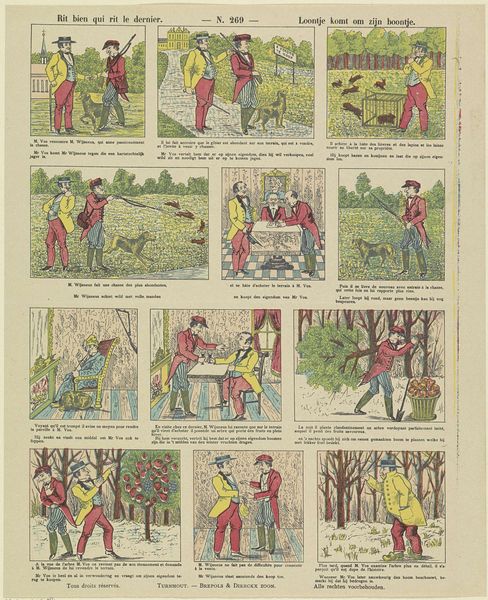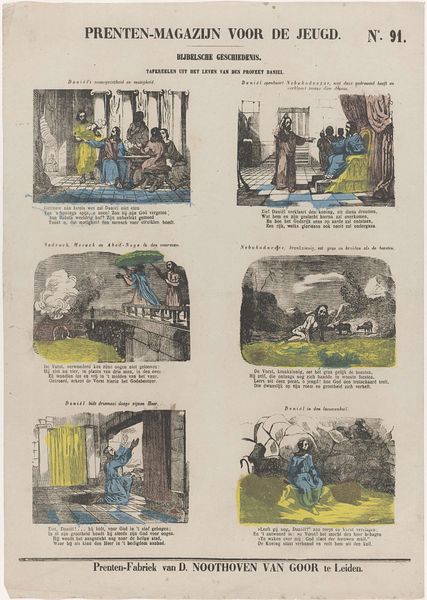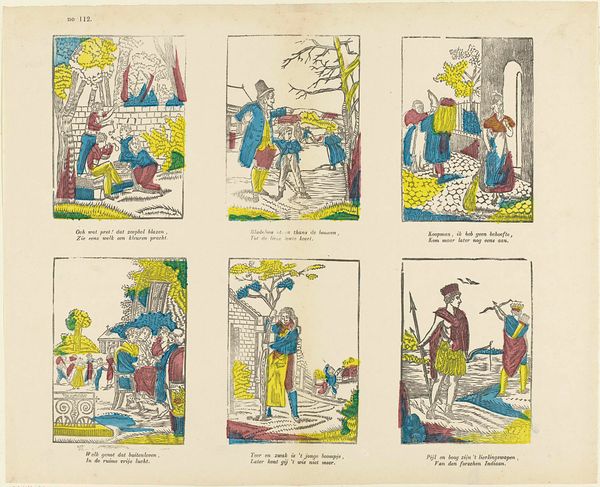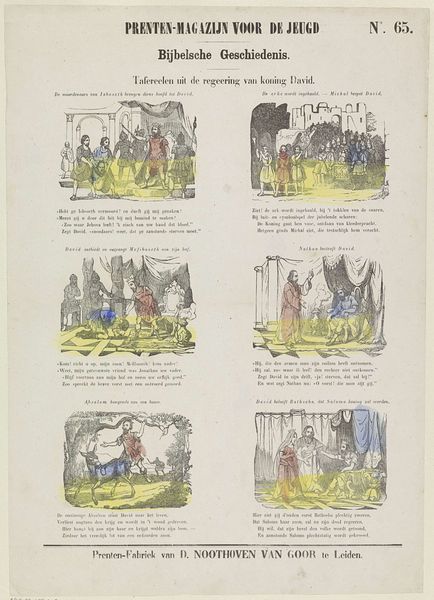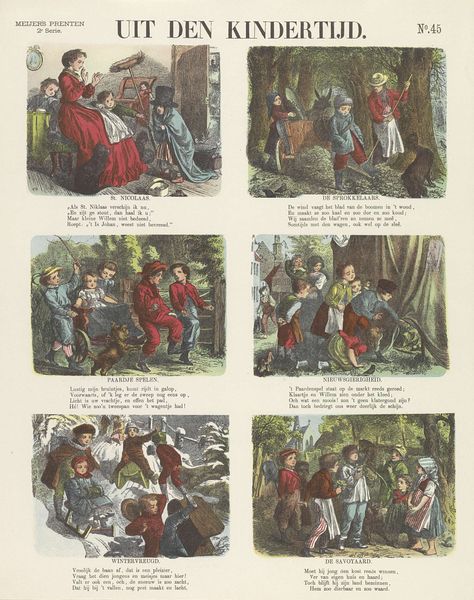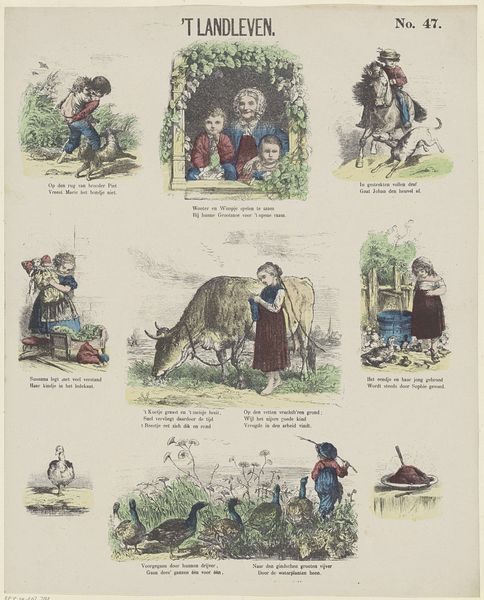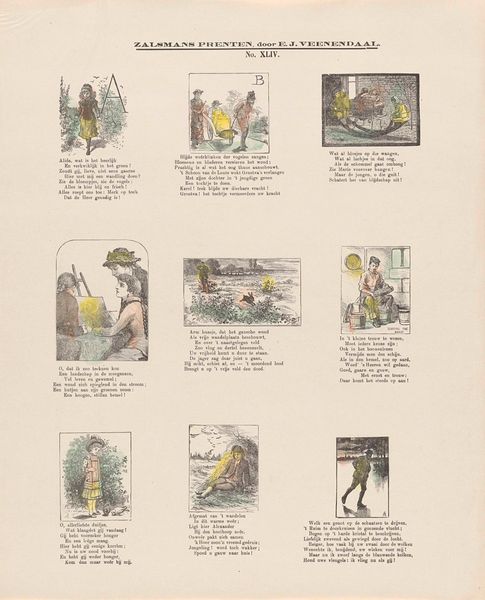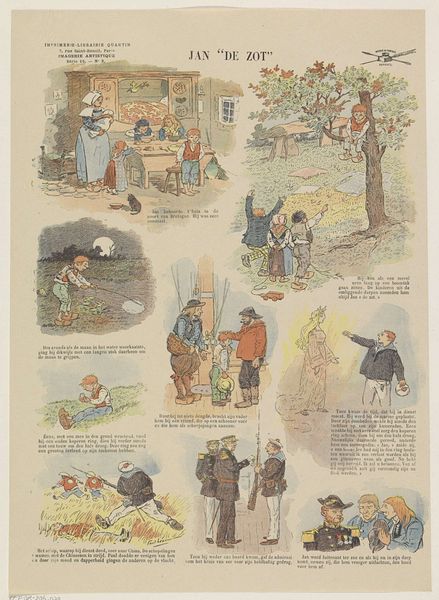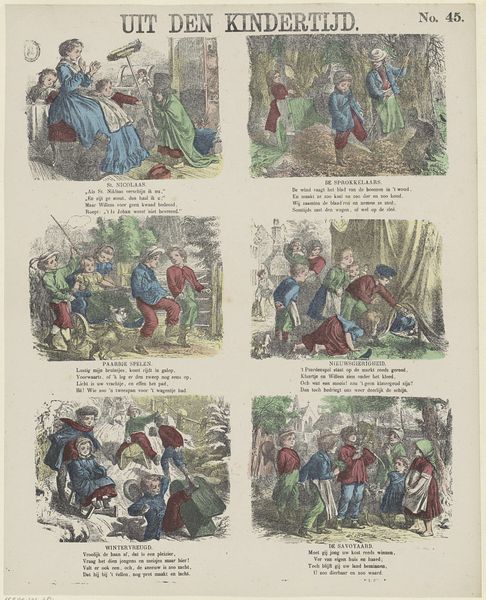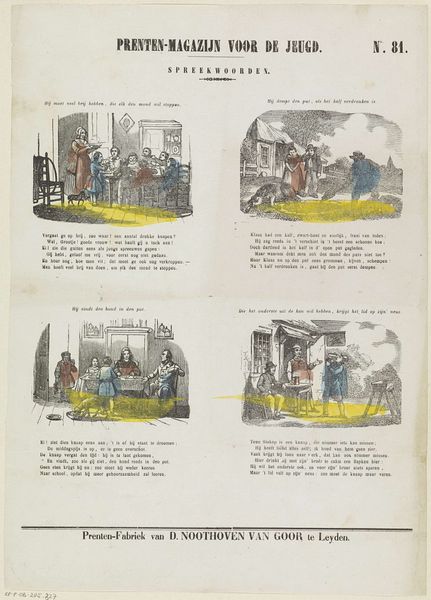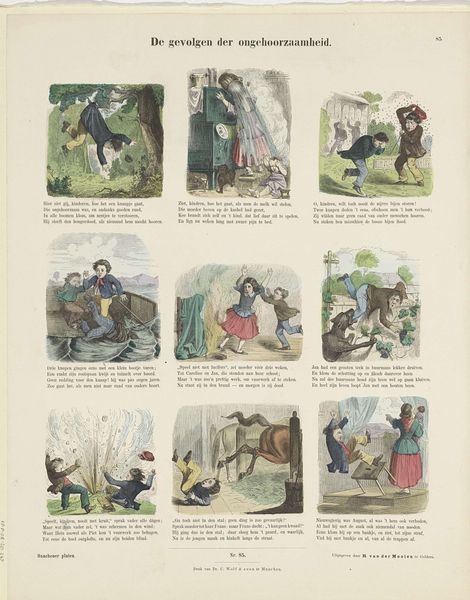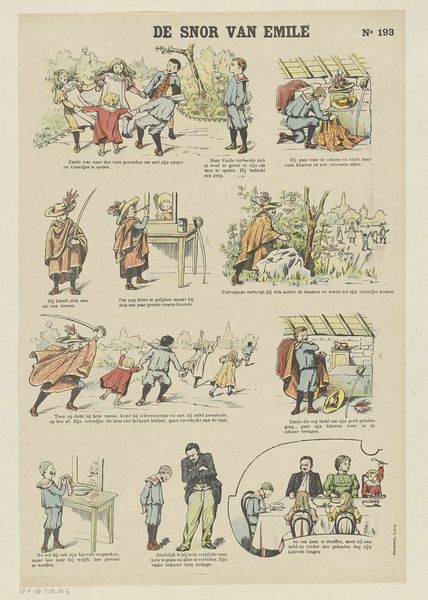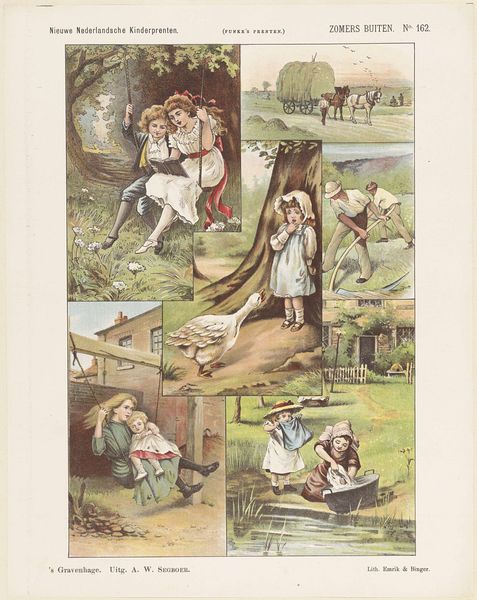
drawing, print
#
drawing
# print
#
child
#
genre-painting
Dimensions: height 427 mm, width 340 mm
Copyright: Rijks Museum: Open Domain
Editor: This is "Kindertaferelen," or "Children's Scenes," a print by Gerhardus Philippus Zalsman created sometime between 1869 and 1882. I'm struck by how these vignettes capture seemingly ordinary moments, yet something about their rendering feels symbolic. What stands out to you? Curator: I am immediately drawn to the enduring symbolism inherent in childhood imagery. Throughout history, artists have used children to represent innocence, potential, but also vulnerability, sometimes cultural anxiety. Looking at this print, notice how each small scene utilizes domestic settings. Think about what the symbols of “home” and childhood meant in the late 19th century. Editor: That's interesting. Could you elaborate on the symbolism of “home” and “childhood” here? Curator: Home would be considered a haven. Look at the visual motifs -- the enclosed spaces, the gatherings, even the pets. What emotions are evoked for you? What aspects of familial or cultural memory might they trigger, even today? These small glimpses feel protective. Though the details are mundane – a child feeding a pet, a gathering – they are loaded with implications of care, upbringing, and societal values imposed on children. Editor: I see your point. The seeming simplicity actually reveals deeper cultural expectations around domesticity and childhood itself. The emotional weight isn't necessarily in what's depicted, but what those depictions represent on a grander scale. Curator: Exactly. The continuity of such imagery over time highlights persistent cultural ideals about children and family. Perhaps that is a reflection of cultural desires rather than accurate memories, wouldn’t you say? Editor: Definitely something to consider. Thanks, this was eye-opening! Curator: My pleasure; may this exchange help everyone gain new eyes.
Comments
No comments
Be the first to comment and join the conversation on the ultimate creative platform.
